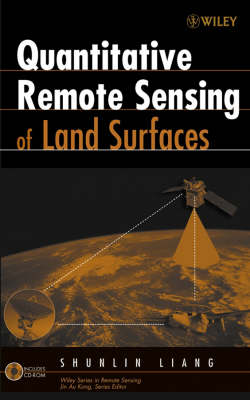Wiley Series in Remote Sensing and Image Processing
1 primary work • 2 total works
Book 23
Processing the vast amounts of data on the Earth's land surface environment generated by NASA's and other international satellite programs is a significant challenge. Filling a gap between the theoretical, physically-based modelling and specific applications, this in-depth study presents practical quantitative algorithms for estimating various land surface variables from remotely sensed observations. A concise review of the basic principles of optical remote sensing as well as practical algorithms for estimating land surface variables quantitatively from remotely sensed observations. Emphasizes both the basic principles of optical remote sensing and practical algorithms for estimating land surface variables quantitatively from remotely sensed observations Presents the current physical understanding of remote sensing as a system with a focus on radiative transfer modelling of the atmosphere, canopy, soil and snow Gathers the state of the art quantitative algorithms for sensor calibration, atmospheric and topographic correction, estimation of a variety of biophysical and geoph ysical variables, and four-dimensional data assimilation
Fundamentals of Information Extraction in Environmental Remote Sensing
by Shunlin Liang
Published 4 September 2009
This book presents various state-of-the-art techniques for estimating both category and numerical variables of land surfaces from a variety of data types (e.g., optical sensors, RADAR, LIDAR). The presentation of this book will be discipline neutral, so students in various fields of study can gain a clear understanding of these information extraction techniques and their applications. This book fills the need for an undergraduate textbook that places significant emphasis on information extraction. Existing books that cover this area are too advanced for the undergraduate level.

